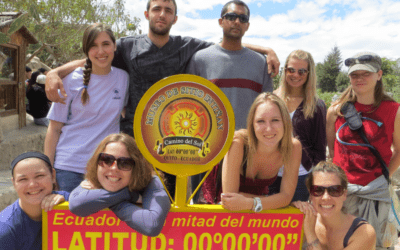“If you want to encourage people to do something, make it easy.” – Richard Thaler, author of Nudge and recipient of the Nobel Prize in economics in 2017.
The idea sounds so obvious that many people discount the power of a “nudge”. Richard Thaler further defines a nudge as “any small feature in the environment that attracts our attention and influences the behavior that we make.” When it comes to the ambitious goal of increasing study abroad participation, this simple concept can have far-reaching impacts. In a series of three posts, I will introduce the idea of nudging, present real-world examples of nudges, and hopefully, challenge offices to think of ways that they can nudge students toward international experiences.
Below are several examples of very successful, simple nudges.
Nudge 1:

Providing children in schools with apples that have been pre-cut instead of whole increased apple consumption by 71%. Source.
Nudge 2:

Sending text confirmation and including the job seekers name, the advisor’s name, and a good luck message increased interview attendance at job fairs from 10.5% to 26.8%. Source.
Nudge 3:

The U.K. Government sends letters to late taxpayers, typically resulting in about 33% payment. By changing the wording in the letter to say “9 out of 10 people pay their taxes, you are in the small minority that does not.” the payment rate increased to 39%. Source.
Each of these examples is an effective Nudge, pushing people towards a desired outcome and making it easier for the end user to obtain that outcome. Nudges are not mandates nor the removal of choice but changing choice architecture to influence outcomes.
Where can your office Nudge students?
- Does your office send text messages to students to confirm appointments? What wording do you use?
- Is your on-campus study abroad office visible and accessible?
- Do all students hear about programs during orientation?
- Could you change marketing language so students know that most of their peers who go abroad do indeed graduate on time?
- Do you advertise statistics on how many students that go abroad receive financial aid?
- What do students need to opt-into versus opt-out of?
Many nudges are so obvious they can be difficult to recognize but with a framework, we can work to create nudges and make the choice of having an international experience easier for students.
Next week we are going to look at a framework and concrete steps to design and implement a nudge.
Additional reading on the topic:
- Social and Behavioral Sciences Team 2016 Annual Report
- The Behavioral Insights Team 2017-18 Annual Report
- NPR TED Radio Hour
- Freakanomics Radio
- Cornell Chronicle
- Bloomberg Qunit
- Science Direct
About the Author:
Kit Ward is a Business Development Representative at Via TRM. He has a Bachelors of Science in Economics from Texas Christian University. He studied the psychological component of people’s behavior within the marketplace – specifically, the irrational way in which people make decisions. He applies this research to the field of international education and enjoys the conversation on student decision-making when it comes to study abroad.




